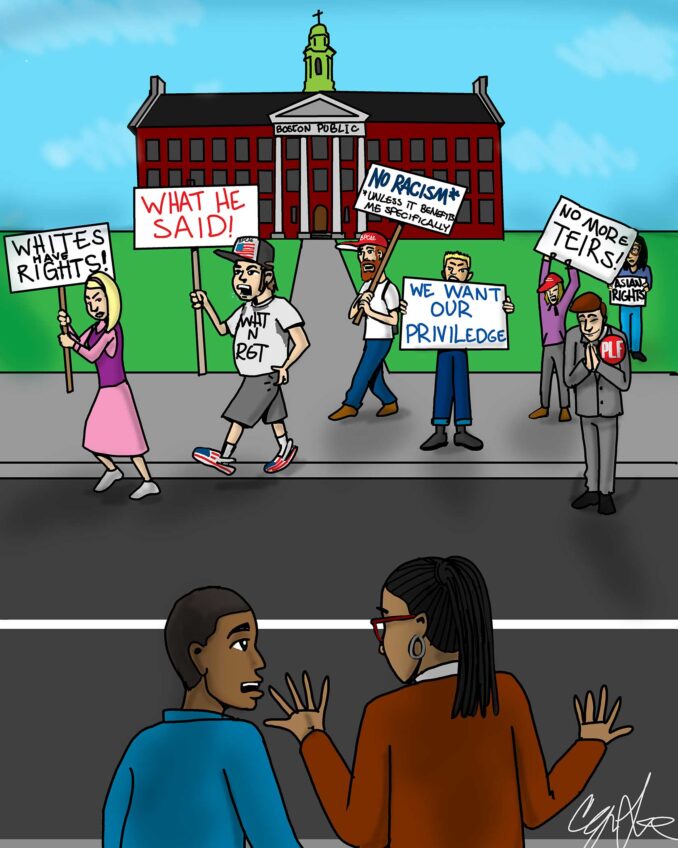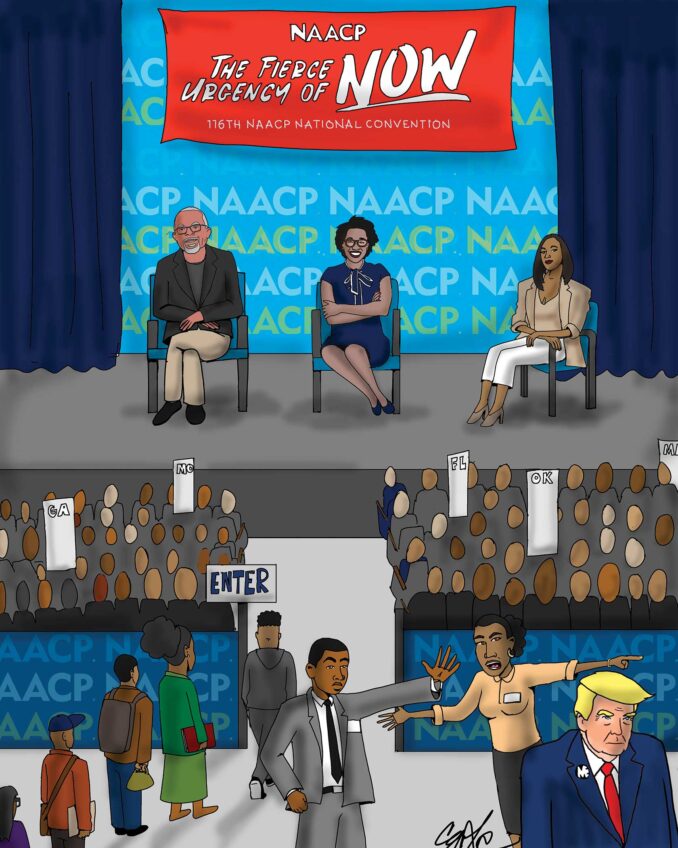If you thought there were no Black people on Nantucket Island back in the day, other than Frederick Douglass delivering his anti-slavery speeches, you’ll quickly be disabused of that notion. Visit the Museum of African American History on Nantucket and speak with the African American staff members there.
Like libraries, museums are vital institutions. African American museums are rare. They represent a small percentage of all U.S. museums. The fact that the Museum of African American History (MAAH) in Massachusetts has two historic sites — Boston and Nantucket— is unique. Both sites offer a diverse range of enriching cultural programs, exhibitions, artists and social events throughout the year under the leadership of Dr. Noelle N. Trent, president and CEO. Both sites were involved with the Underground Railroad and today are part of the Black Heritage Trail.
Bee Blunt’s designs
MAAH’s recent event enticed my spouse and me to embark on a daylong trip to Nantucket. On July 19, we met Portia Blunt at MAAH Nantucket, where she showcased her Bee Blunt clothes collection, “Threads of Legacy: Nantucket Narratives.” Blunt redefines the conventional notion of the “American Classic Style” with her inimitable technique of narrative-driven designs, showcasing the illustrious beauty of Black history and culture.
“Our inspiration starts with our rich culture and the legacy of style it has given us,” reads a card Blunt has next to each of her displays.
“As an Apparel Industry executive & veteran, I am a designer who loves to tell stories and learn. I figured if I can tell the stories that have been left untold, we can uncover the beautiful legacy of black American culture and show how rich and beautiful it is through fashion,” Blunt wrote on her website.
Blunt’s red Inkwell sweater is one of her most popular items. The design represents the century-long resilience of Black joy in the historic African American summer vacationing community of Oak Bluffs, Martha’s Vineyard, which was founded in the 1890s during the Jim Crow era and is still thriving today.
At the Nantucket site, Blunt displayed her new designs, including the Nantucket sweaters. For the AC-freezing ferry ride back to Hyannis, we purchased sweaters. My spouse purchased the blue and gray New Guinea sweater. When asked about its name, Blunt beamed to tell us that New Guinea was a predominantly Black enclave composed of Native Americans, Cape Verdeans and free and formerly enslaved Blacks. Shantaw Bloise-Murphy, director of Nantucket’s Department of Culture & Tourism, chimed in to tell us about Black Nantucketers who were part of the whaling industry, the abolitionist movement, entrepreneurs and landowners.
“This history can easily get lost because people don’t know enough about us on this island, setting up our independence. But you know us, we always found a way.”
Bloise-Murphy grew up on the island, graduated from Nantucket High School and met my husband there. “My hope is more tourists of color will come here, especially after reading about our history on the museum’s website to hear from us about the island.”
I purchased the red and white Nantucket sweater, which bears the date 1825, which was when the island’s African Meeting House was founded. It functioned as a multi-site, meeting place, church and school. And like the African Meeting House founded in Boston in 1806, it was the hub of the Black community during the 18th and 19th centuries. Both sites are now part of MAAH.
Black home ownership
Born in Richmond, Va., in 1893, Florence Elizabeth Higginbotham came to Nantucket to work as a cook in 1911. In 1920 she purchased the historic Seneca Boston house for rental income. In 1933, she purchased the adjoining historic African Meeting House, renting it out for storage and, on one occasion, as a studio that’s now part of MAAH.
I asked whether Black homeownership was the exception, especially with the federal Fugitive Slave Act of 1850 hanging over the New Guinea community.
“You could come here with the help of the Quakers as part of the Underground Railroad. You get a job, and you get real opportunities to build yourself up,” Charity Grace Mofsen told me, who was MAAH’s associate director of Nantucket Operations from 2016-2018.
“A lot of people who came here, they bought homes. They started businesses,” Mofsen said, who is now the island photographer. Since 2015, Nantucket has been her home. “Nantucket’s dark skies give the opportunity to capture the Milky Way, which is such a gift,” she said.
A distinctive “Black Space”
We have always found creative ways to honor Black history through our griots, songs, dances, writings, artists and entrepreneurs such as Bee Blunt’s clothing line. Black museums will preserve the dignity and legacy of not only our huge icons but also our local and community heroes. These museums are an investment in us. With the deliberate aims to erase Black history, the unending attacks on Critical Race Theory and the dismantling of all things associated with diversity, equity and inclusion, these museums preserve our rich stories.
Today, the history of New Guinea is revered for its resistance and resilience during the eras of slavery and Jim Crow. The Black cemetery, just a stone’s throw from the MAAH, is where many of the community’s shakers and movers and colorful characters now rest in peace. The MAAH is where their photos, official records and recordings of their time on the island are preserved in perpetuity — uncensored, unredacted and unerased.
The Reverend Monroe is an ordained minister, religion columnist and motivational speaker.







Leave a Reply
You must be logged in to post a comment.